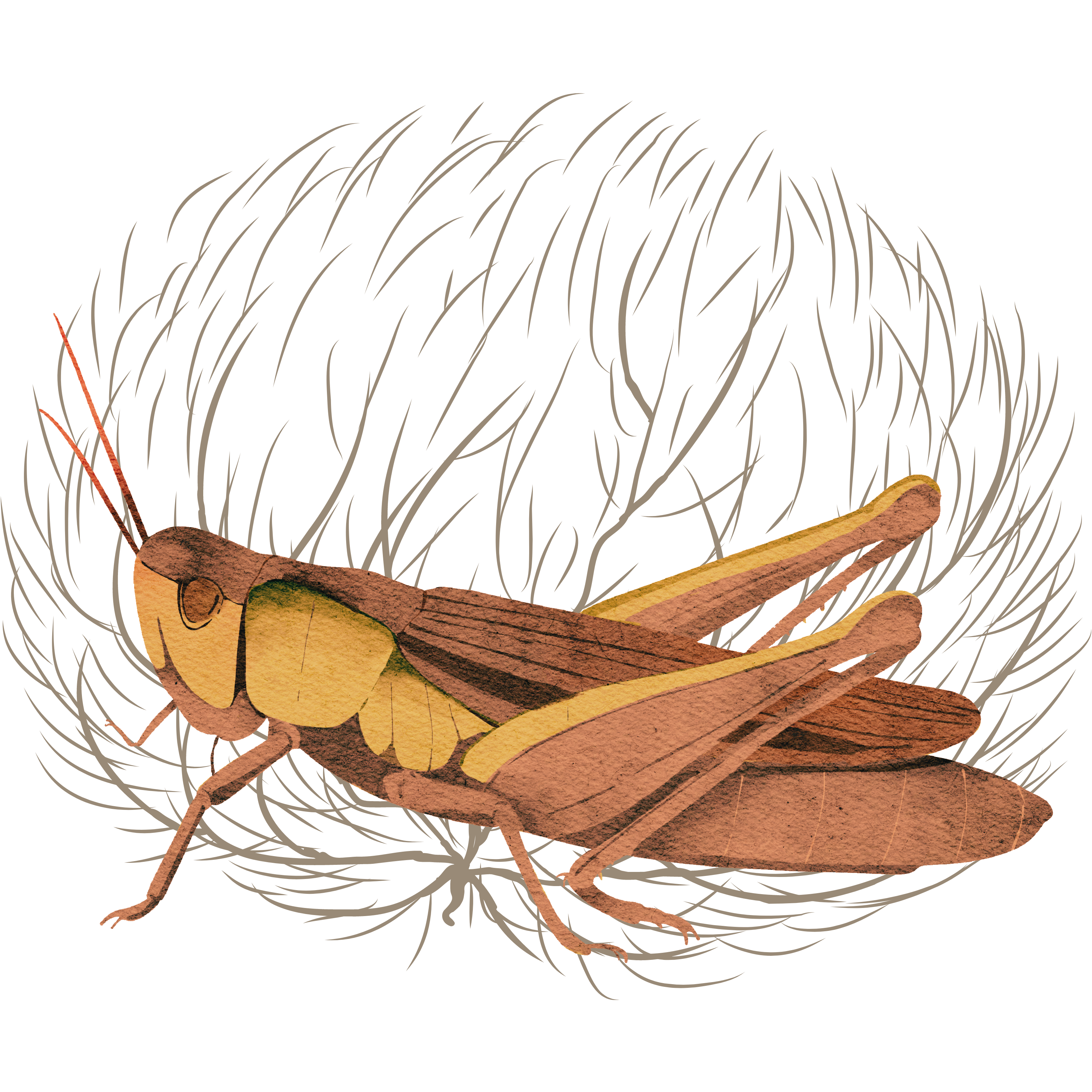Sandhopper
The sandhopper fills a valluable role in the ecosystem of Tilth, feeding on the remnants of the dead -- and dying -- even as they are fed on by the Winged Sand Fox and their dire cousins, the Greater Common Sand Fox. I recommend them lightly roasted, dipped in spiced honey, and rolled in chopped nuts.
Carrion-eaters, sandhoppers are a swarming insect species native to the desert island of Tilth. They feed on dead flesh and plant matter. In lean times, or when swarming, they will easily speed along the process by turning the living into the dead.
Basic Information
Biological Cycle
The biological life cycle of the sandhopper follows the seasonal rotation of the year as observed at Tilth's latitude.
Eggs hatch in the early days of winter, when what little rain falls on Tilth can be found hiding in shaded pools at the base of rocks. This water is enough to sustain the larvae as they devour the decaying mass of their father's dissicated and headless corpse, as well as the dry brambles of the nest he so carefully built.
In the first days of spring, when the water is gone and the hot air begins to bake the sands once more, the larvae curl into little ovoid pellets. Their soft skin turns into a hard shell as their insides are liquified into a gelatinous goop the color of a sinus infection. During this pupal state, they are highly toxic and will instantly kill most small animals. People who eat them become ill and vomit. Soon after, the person will experience powerful hallucinations and a state of euphoric superconsciousness. This lasts for several hours until the person inevitably falls asleep and their biological systems shut down one-by-one.
In the last days of spring, the new sandhopper hatches from its crysalis, fully grown. Males immediately begin building a nest. This consists of digging a winding brood in the compacted sands at the base of a rock in the desert. Once this is done, he will collect dried brambles and drag them into the brood, packing the carefully dug tunnels tightly with the sun-dried vegetation.
Females, meanwhile, immediately begin hunting smaller insects and tiny lizards to strengthen the egg sack. Once she has decided that she is ready to mate, she will inspect the nest that a male has built. If she does not find it to her standards, she will simply move on, leaving the male to try for the attentions of a less picky female. Once a female accepts a male, they will retreat to the furthest point inside the brood. There, he will inseminate her while she devours his head. Once this process is complete, the female will lay several batches of eggs in the furthest dead ends of the brood. This done, she will leave the nest and die in the late summer heat, or be eaten by a hungry sand fox.
This mating process takes all summer, and the eggs are laid in the early fall, when less direct sunlight means less heat to dry out the delicate egg membranes.










These are astoundingly awesome and scary/gross, both in equal measure. I loved how my favorite line kept changing as I went on, evidence that the whole thing is just really good. At first, I thought I was going to say "I recommend them lightly roasted, dipped in spiced honey, and rolled in chopped nuts" was my favorite line, but then you mentioned the young feasting on their father's headless corpse and that was my favorite line, and then, later, you elaborated on how the father became headless, and THAT was my favorite line. Basically: I loved this.
I'm so pleased. Thank you for the feedback. I love science and read about all kinds of weird critters, which makes it easy to look at a place and say "here is the ecosystem that might develop there."
Haly, the Moonlight Bard